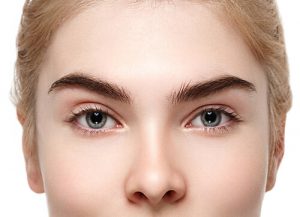Nowadays, the saying, ‘beauty is skin-deep’, is not relatable anymore. Beauty is not based primarily on your attitude or manners, it is now leaning more towards the physical aspect of the word. With the influence of social media in the way of thinking of people, cosmetic companies and their brand ambassadors can easily manipulate the thoughts of people towards what is the standard of beauty in the modern world. This makes cosmetic medical procedures, like rhinoplasty, such a big deal. One must wonder, do I need a nose job? Here, let us discover important details about rhinoplasty, its benefits, procedure, risks, and more so we can answer the question, do I need a nose job?
Rhinoplasty: A brief background
If you are considering getting a nose job , you should at least know what the operation is and what it is for. Rhinoplasty, the medical term for a nose job, is primarily a cosmetic medical procedure that alters the size, shape, and overall appearance of the nose to become proportional to the face. It is also performed to address some medical conditions whose root cause points towards a nasal structure defect. Such medical conditions include obstructive sleep apnoea (OSA), deviated septum, traumatic injury to the nose, and birth defects like cleft palate. These conditions may be addressed and resolved by manipulating the internal structures of the nose through nose job .
What are the benefits of rhinoplasty ?
As mentioned earlier, a typical nose job can solve different aesthetic and physiological problems of the patient. Here are some of the benefits a rhinoplasty patient can get from this operation.
 It can remove a prominent hump/bump on the nose bridge
It can remove a prominent hump/bump on the nose bridge- It can straighten the bridge
- It can reshape and resize the nasal tip
- It can change the size of the nostrils to complement the face
- It can remove the obstruction in the breathing passages
- It can correct structural deformities caused by a traumatic accident or injury
- It can make the nose proportional to the face (resizing, reshaping, changing projection, etc.)
If you still have more questions about what rhinoplasty can do to improve your looks, schedule a consultation with our dependable doctors at Rhinoplasty Sydney Cost so you can be enlightened and guided as to how this cosmetic option is the right choice for you.
How is rhinoplasty performed?
Do I need a nose job? If you and your doctor decide that the answer is ‘Yes”, then you need to understand what happens before, during, and after the .
Before the nose job
Getting prepared for this cosmetic enhancement is not an easy feat. You must be physically mature (around 16 to 17 years of age to be safe), a non-smoker (affects the natural healing process of the body), has realistic expectations about the procedure, and is overall physically healthy.
Once your doctor agrees that you can indeed benefit from a nose job , he will perform a series of screening and medical evaluation to determine if you are a good candidate for the operation. This includes a comprehensive medical assessment and interview, laboratory tests, and imaging to make sure that you are physically healthy to undergo the operation.
If you are scared or still hesitant about going under the knife but would still want to have changes to your nose, ask your doctor about nonsurgical rhinoplasty, otherwise known as liquid or injection rhinoplasty.
During the nose job
Rhinoplasty is a cosmetic medical procedure that is individualised to fit the need and preferences of the patient, so one procedure is different from the other. However, cosmetic doctors follow the same standard procedural steps depending on the type of rhinoplasty that suits your condition. Under local anaesthesia with sedation or general anaesthesia, the doctor creates incisions to expose the internal nasal structures that need modification using two different techniques. For closed rhinoplasty, all the incisions are located inside the nose, while open rhinoplasty uses the same internal incision with an additional external cut near the base of the nose in between the nostrils. The latter type is required for complex nasal recontouring and manipulation. The doctor may reduce the size of the nose by removing parts of the skin, bone, and cartilage, or he can also enhance it using implants or cartilage and bone tissue either from a donor or the patient itself. After finishing the alterations, incisions are carefully closed using biocompatible and absorbable sutures, supported by splints, and draped with bandages.
After the nose job

Immediately after the , your nose may feel swollen and tender, and you may have difficulty breathing or feeling stuffy because of the nasal packing or splints. These discomforts are going to be managed by prescribed pain medications and antiinflammatories. Instructions about wound care, work restrictions, and activity limitations are also provided to make it a bit easier for you to recover at home. Gradual physical movements are encouraged in the coming weeks, and a follow-up consultation with your doctor is required to monitor your overall condition and detect any complication that can be addressed at its early onset. Checking in with your doctor a few weeks after the operation can also determine the integrity and efficiency of the procedure in addressing your concerns. It can also be an opportunity for you to ask more questions and discuss with your doctor what you can expect in the coming days and weeks.
What are the risks of undergoing rhinoplasty ?
No is exempted from any risks and complications. There will always be a possibility or a potential threat of getting adverse reactions when an invasive procedure is performed on the body. Thus, here are some foreseeable risks and complications that some patients reported during and after their .
- Bleeding
- Infection
- Anaesthesia effects
- Swelling and bruising
- Loss of sensation or numbness on different parts of the nose
- Pain and tenderness on the site
- Asymmetry of the nostrils
- Unsatisfactory results
- Possibility of needing a revision
Let your reliable doctor explain each one to you and give you the reassurance of what he is going to do to prevent these risks and complications. At the same time, as any is teamwork between the doctor and the patient, it is imperative that you do your share ad follow the post-surgical orders your doctor requires you to do to ensure your safety and satisfaction of the operation.


 It can remove a prominent hump/bump on the nose bridge
It can remove a prominent hump/bump on the nose bridge